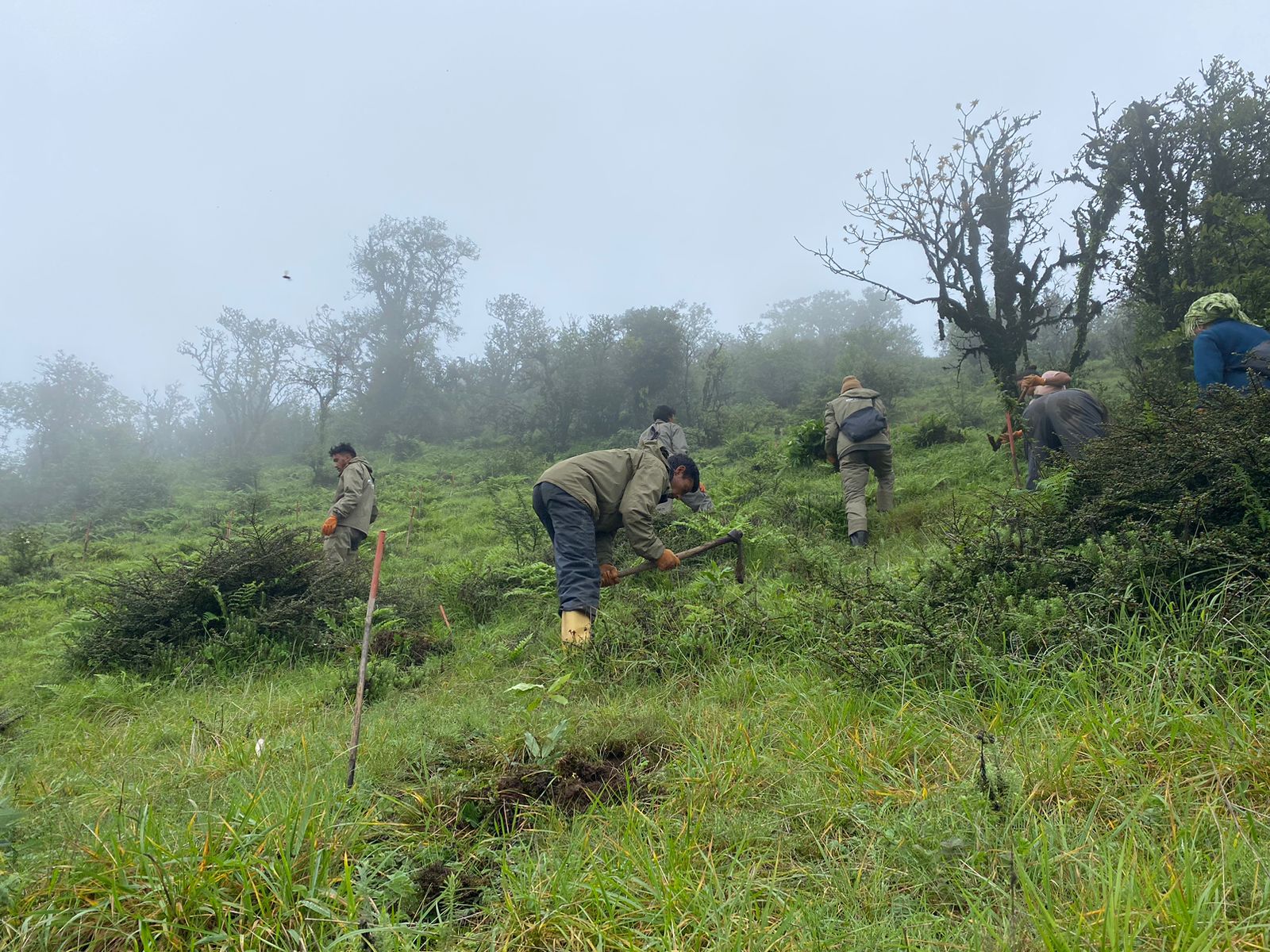The Power of Partnership in Red Panda Conservation
Rotterdam Zoo demonstrates unwavering support for crucial red panda research and conservation in Nepal.
The rare and mysterious marbled cat (Pardofelis marmorata) is not much bigger than a domestic cat. It has distinctive spots reminiscent of a clouded leopard and an exceptionally long tail. This small arboreal member of the Felidae family lives throughout Southeast Asia, from the Himalayan foothills of India and Bhutan to China and down through Malaysia and Indonesia.
The marbled cat is notably elusive, and before 2019 there was no photographic evidence of this species in Nepal. However, during an intensive camera trap mammal survey conducted by Red Panda Network (RPN) in Nepal’s Panchthar-Ilam-Taplejung (PIT) corridor, one of our camera traps captured the first-ever photograph of a marbled cat in Panchthar district, Nepal.
This unprecedented event occurred thanks to the generous support of Rotterdam Zoo — or “Diergaarde Blijdorp” in Dutch — one of the oldest zoos in the Netherlands and a consistent supporter of wildlife conservation worldwide.
Marbled cat photographed on camera trap in Nepal. Credit: Sonam Tashi Lama/RPN
Their support of this camera trap survey also resulted in the first photograph of a Bengal tiger in red panda habitat, at an elevation of 3,165 meters in Ilam district, Nepal.
Rotterdam Zoo’s support of ecological research in red panda habitat doesn’t end there — RPN collaborated with them to complete Nepal’s first red panda GPS collar study. This study provided critical baseline data on red pandas in the wild and valuable insight into the landscape-level conservation efforts required to save them! Learn more in Findings from the First-Ever Red Panda Collar Study.
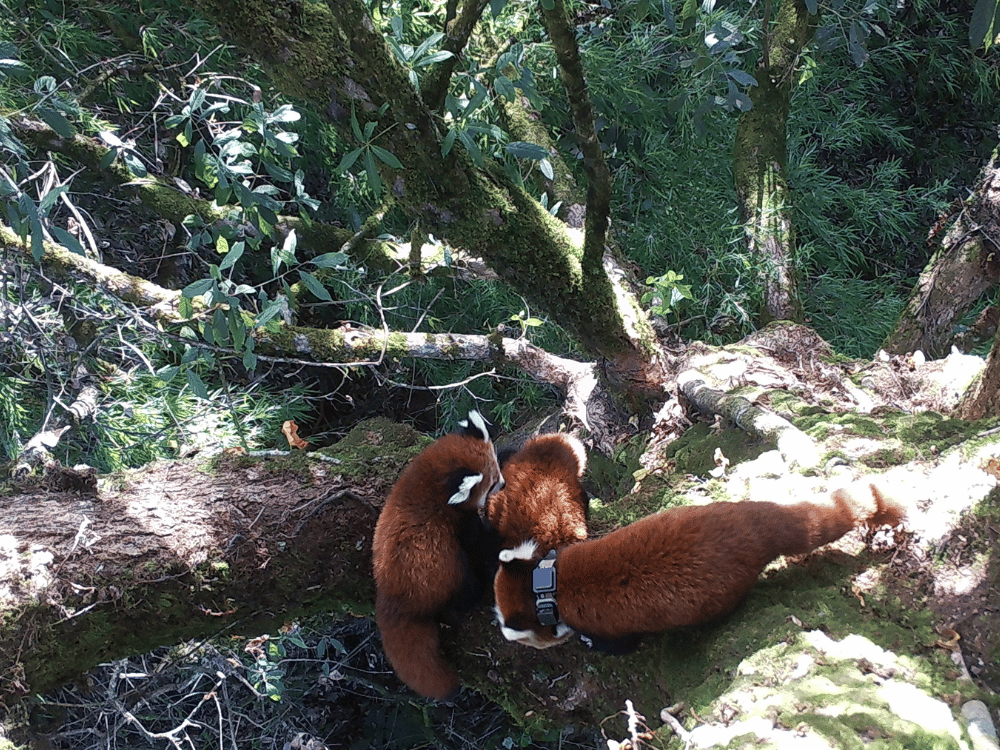
Collared red panda and cubs during collar study in PIT corridor. Credit: RPN
We spoke with Janno Weerman, the Manager of Living Collections for Rotterdam Zoo about his conservation journey and the Zoo’s inspiring commitment to saving threatened wildlife like red pandas.
RPN: Janno, can you share a bit about yourself and what you do at Rotterdam Zoo?
After my study of Wildlife Management (BSc), I started working at Rotterdam in 1998. I began as an animal keeper and I have worked with different taxonomic groups. Later I became head keeper, then curator, and now I work as Manager of Living Collections. In my current position, I am responsible for all operation matters regarding the living collection (animals, plants, animal food department, water quality, and veterinary care). Since 2014, I also took on the role of EAZA ex-situ population (EEP) manager for red pandas in European zoos. In 2019, I became convenor for the WAZA Red Panda Global Species Management Plan.
RPN: How did the collaboration between Red Panda Network and Rotterdam Zoo begin? How does your organization support red panda conservation?
Angela Glatston, who was working at Rotterdam Zoo, made contact with RPN right after it was founded. In the beginning Rotterdam Zoo mainly provided financial support. In 2016, I visited Nepal to help RPN with projects for the first time. After that, Rotterdam and RPN began a more intensive cooperation. A few projects to mention are the mammal survey and the red panda GPS collar research. In 2023 Rotterdam Zoo presented its new masterplan with a renewed mission: ‘Together we bring nature back to life’. With the red panda as one of our impact species, we aim to apply even more focus on conservation efforts than before.
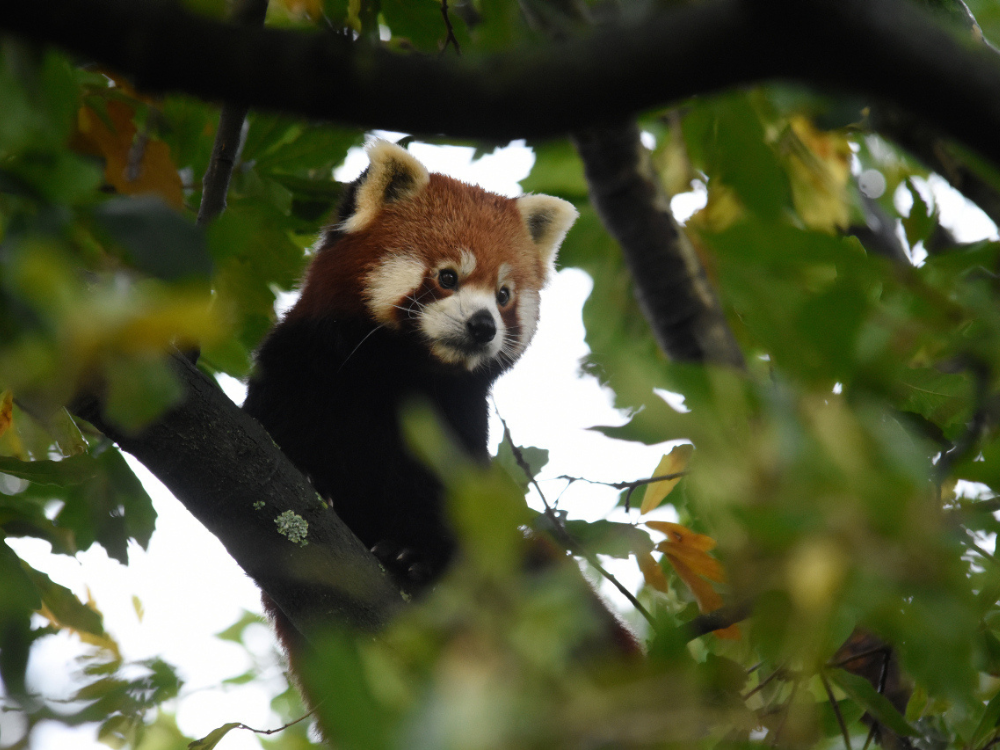
Credit: Rotterdam Zoo
RPN: What role do you believe zoos can play in red panda conservation?
I am convinced that zoos have an essential role in conservation. Through our longstanding expertise with captive breeding and handling of animals, zoos can provide crucial expertise on ex-situ management because we have gained a deeper understanding of the species (health, diseases, handling, etc). Zoos are vital to helping research practices be more efficient, as we can trial methods within a protected environment with a lot of supervision. For example, Rotterdam Zoo has helped to test equipment for the GPS collar study and provide training for red panda capturing methods. This way we can ensure safe implementation of these methods in the wild environment. Modern-day zoos work together according to the One Plan Approach of the IUCN. That way we can maximize our efforts and be as effective as possible in red panda conservation.
RPN: In what ways does Rotterdam Zoo implement in-situ conservation, particularly in the context of red pandas?
Rotterdam Zoo supports red panda conservation in many ways. We are the WAZA Red Panda GSMP convenor. In this role, we try to bring all relevant stakeholders (in-situ and ex-situ) together to learn from each other and maximize our impact on red panda conservation.
We also facilitate and fund research, such as the mammal survey and red panda GPS collar study. We support several RPN initiatives, including the Forest Guardian program and the Plant A Red Panda Home campaign — so far, we have supported the purchase of 30 hectares of land and the planting of 110,000 trees for habitat restoration — the cooking stoves project and camera traps for research.
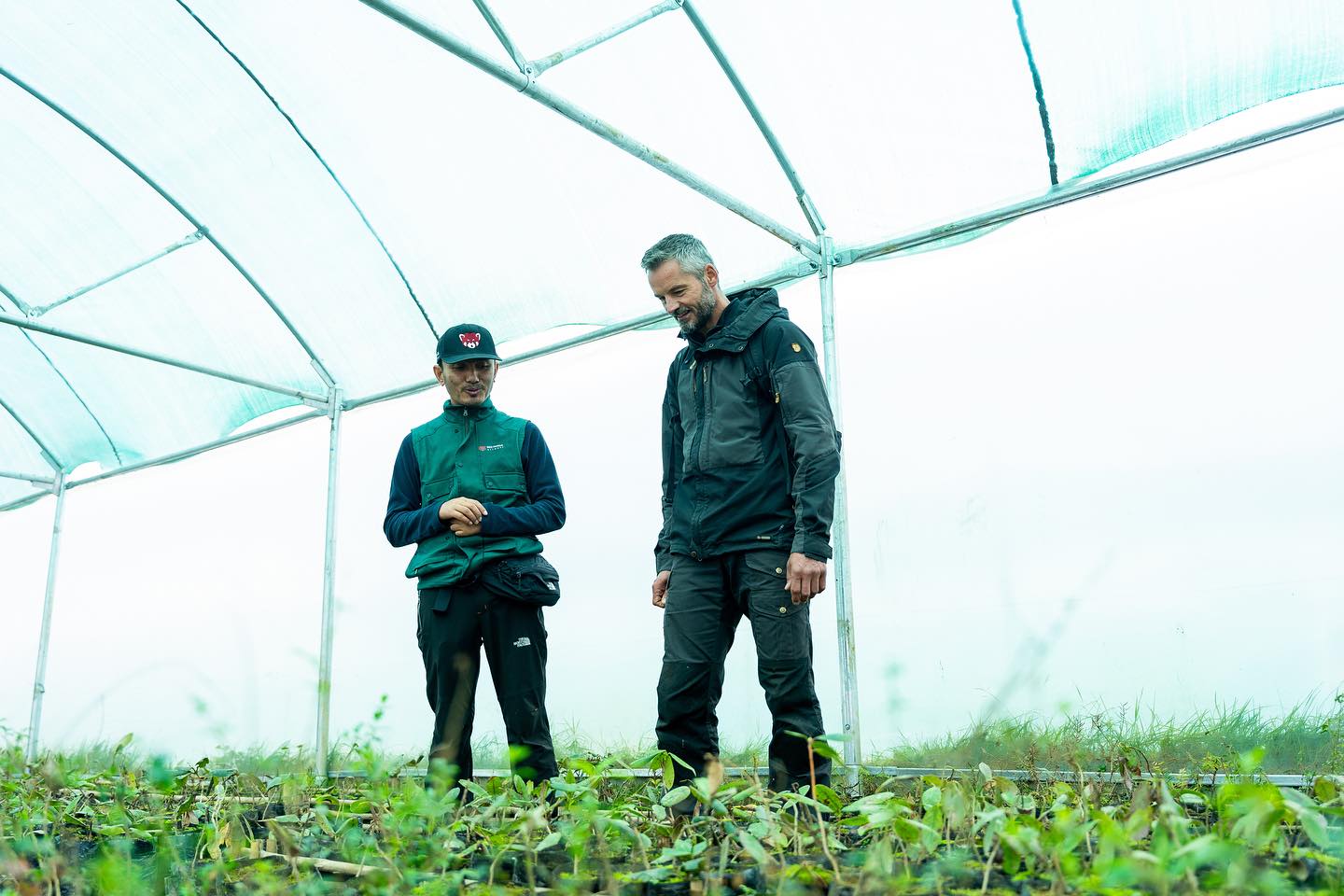
RPN’s Sonam Tashi Lama and Rotterdam Zoo’s Janno Weerman in forest nuserery.
RPN: You have visited Nepal several times to witness RPN's efforts. From your perspective, what kind of impact is RPN making to save red pandas?
I think RPN is very effective in their conservation efforts because they employ people from the region. This way RPN ensures the involvement of the local community. Because conservation is done in cooperation with the local community and the conservation efforts benefit the livelihoods, conservation will be embedded in their daily lives. Another important thing is that the people in the RPN office in Kathmandu are in close contact with the government which is essential for the success of the conservation in the long run. RPN is a very reliable partner and communicates very well with their donors and supporters.
RPN: Can you share one of your most memorable moments from your field trip to Nepal?
My most memorable experience was during the GPS collar study. The weather was very bad, as rain was pouring down, and it took four days before the Forest Guardians spotted the first red panda. I felt a great sense of pride towards the team when we collared the first panda.
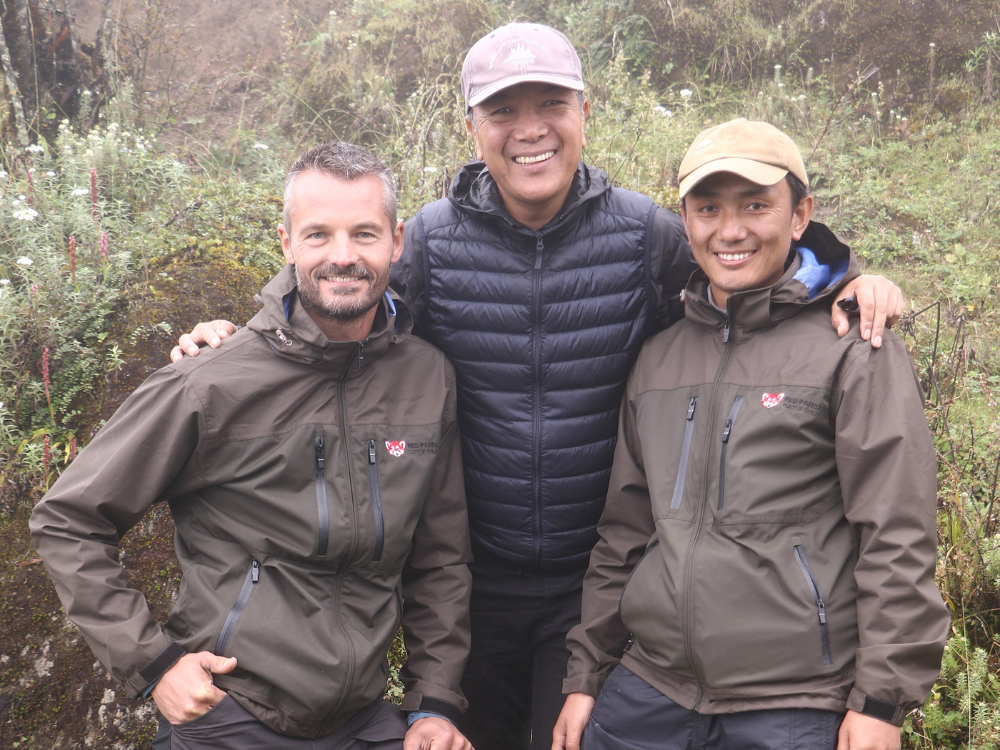
Left to right: Janno Weerman, Rotterdam Zoo; Ang Phuri Sherpa, RPN; Sonam Tashi Lama, RPN
RPN: Please tell us about the remarkable milestones that Rotterdam Zoo and RPN have achieved together.
I think the joint GPS research is a remarkable milestone because it provides essential information for initiating more precise conservation action. Studies like these are needed to understand red panda ecology and take targeted conservation actions.
RPN: What are Rotterdam Zoo's recent focus areas and future strategies for in-situ conservation of endangered species like red pandas?
With the goals set in the Rotterdam Zoo Masterplan 2050, we focus on 10 impact species for which we want to make a difference in conservation. In this way, we can take targeted actions on species conservation and create a bigger impact. We realise that all nature is important, but in order to take effective measures, you need to decide on what you want to focus on in order to make real impactful actions.
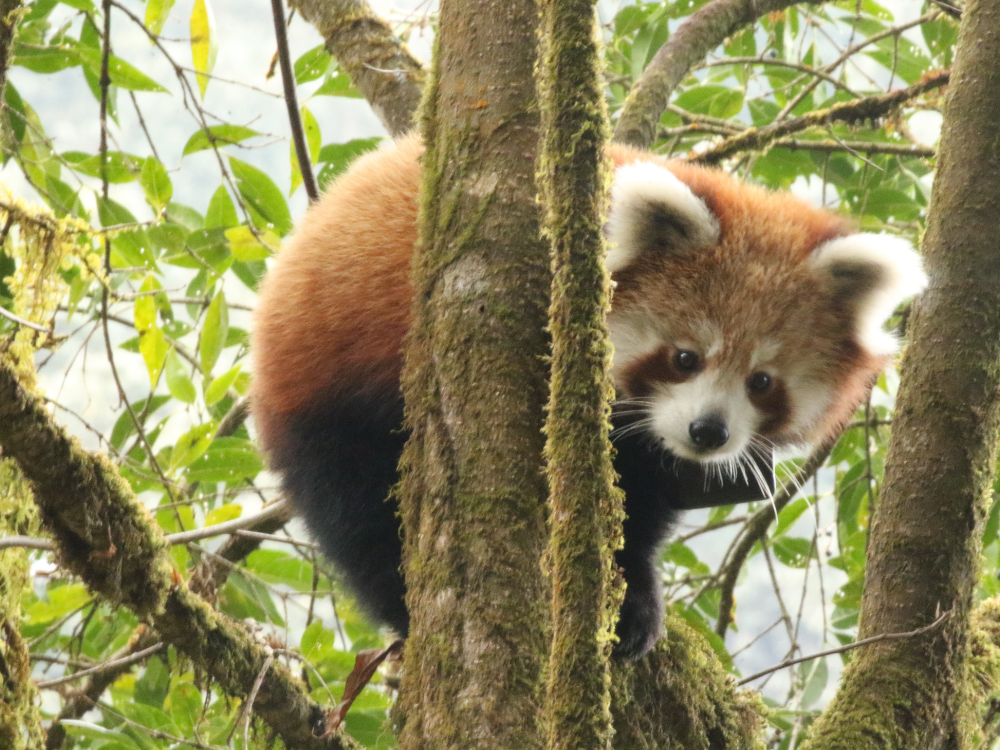 Wild red panda with GPS collar in PIT corridor. Credit: RPN
Wild red panda with GPS collar in PIT corridor. Credit: RPN
Thank you, Janno and Rotterdam Zoo, for your incredible and inspiring dedication to wildlife conservation and for helping us save the last of the first panda!
Story Statistics
2,345 Reads
80 Shares
320 Likes
Related Stories
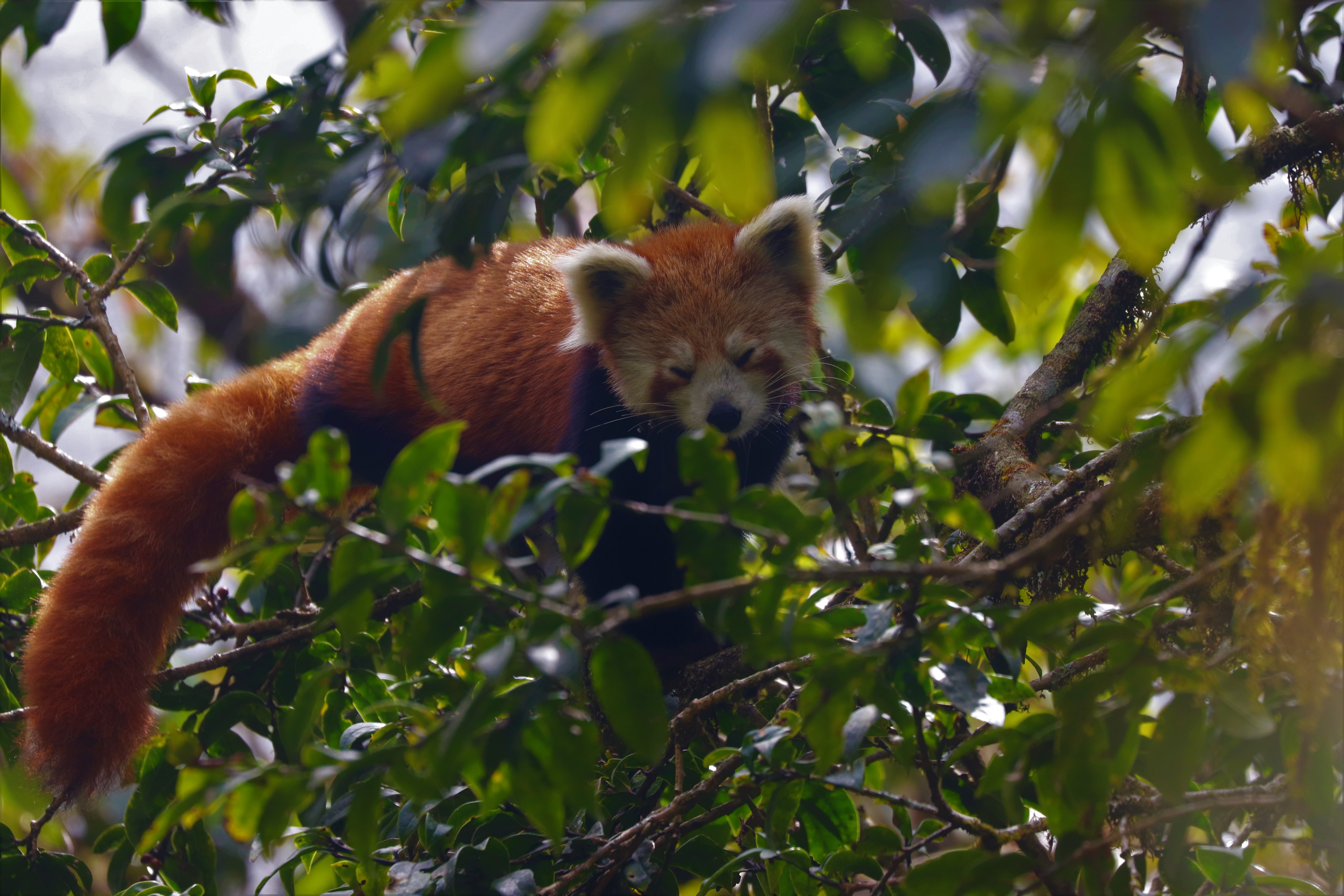
10 months ago
Planting Trees to Save Red Pandas
We are planting trees and restoring degraded habitat in one of the most biodiverse places in the world — all in an effort to save the endangered red panda.
The red panda (Ailurus fulgens) is a unique and fascinating species whose special cuteness draws a lot of attention. However, red pandas are much more than just a pretty face; they’re an important flagship species for the Eastern Himalayan Ecoregion — one of the most biodiverse places in the world.
Their presence in the forests of Nepal, India, Bhutan, and China indicates a healthy and thriving ecosystem. Without them, it’s a sign that the whole forest is in danger.
Unfortunately, red pandas are endangered; there may be as few as 2,500 red pandas remaining in the wild with a global decline of 50% in just 20 years. This important species deserves to be protected and conserved, along with their habitat.
Why are red pandas endangered?
Wild red panda in Nepal. Credit: RPN
Red pandas face many threats in the modern world, including poaching, and predation (or disease) by free-roaming dogs. However, the #1 threat to red panda’s survival is habitat loss fueled by unstainable livestock management and resource harvest practices, deforestation, and climate change.
As a tree-dwelling species, red pandas struggle to survive when forests are fragmented and degraded. Without tree cover and bamboo to eat, the red panda is left vulnerable and populations become susceptible to bottlenecks, which reduce genetic variation and make it harder for populations to adapt.
Unfortunately, much of the red panda habitat in Nepal has been deforested and degraded; 70 percent of red panda habitat lies outside of protected areas and is fragmented into 400 small forest patches.
Red Panda Network is fighting back and restoring red panda habitat
Red Panda Network (RPN) began to take action against this ongoing challenge to red pandas’ survival in 2015, initiating a habitat restoration program. Since then, this initiative has blossomed into one of RPN’s flagship campaigns, Plant a Red Panda Home, which was launched officially in 2020!
Through land purchase and tree planting, this campaign successfully restores core habitats and connects fragmented forests, creating a wildlife corridor crucial for sustaining a viable red panda population. By combatting the #1 threat to red pandas, we aim to see this important species thriving in harmony with their ecological community once more.
Restoration Guardians planting in Jaubari, Ilam. Credit: RPN 2024
The world's first protected area dedicated to red panda
A majority of our restoration efforts are centered in the Panchthar-Ilam-Taplejung (PIT) corridor, home to the densest population of red pandas in Nepal and part of the Eastern Himalayan Broadleaf Forests: a region recognized as an important area for global biodiversity conservation by a number of leading international conservation organizations, including WWF, BirdLife International, and Conservation International.
This critical area is where we are working to establish the PIT Red Panda Protected Forest, which will connect the tri-national Kanchenjunga Conservation Area with India’s Barsey Rhododendron Garden and Singhalila National Park, creating an uninterrupted stretch of protected land extending across 11,500 square km. The PIT Red Panda Protected Forest will be the largest protected forest in Nepal and the first to be managed as a network of community forests!
Jaubari, Ilam district, is a priority location in the PIT corridor for habitat restoration. This area is crucial for establishing habitat contiguity for red pandas as it directly connects the unprotected forest areas of Nepal with protected areas in Nepal and India. Jaubari’s once flourishing forests have been utilized as pastureland and deforested for timber for more than 172 years, resulting in severe degradation of the habitat and leaving over 1665 acres barren.
However, 9 years of dedicated work in this region is showing major improvements to the landscape. Between 2019 and 2023 alone, we have seen a 5% increase in tree cover and an 8% decrease in combined barrenland and settlement areas. Through reforestation initiatives and protective measures like fencing, we are successfully contributing to positive ecological changes in crucial red panda habitat.
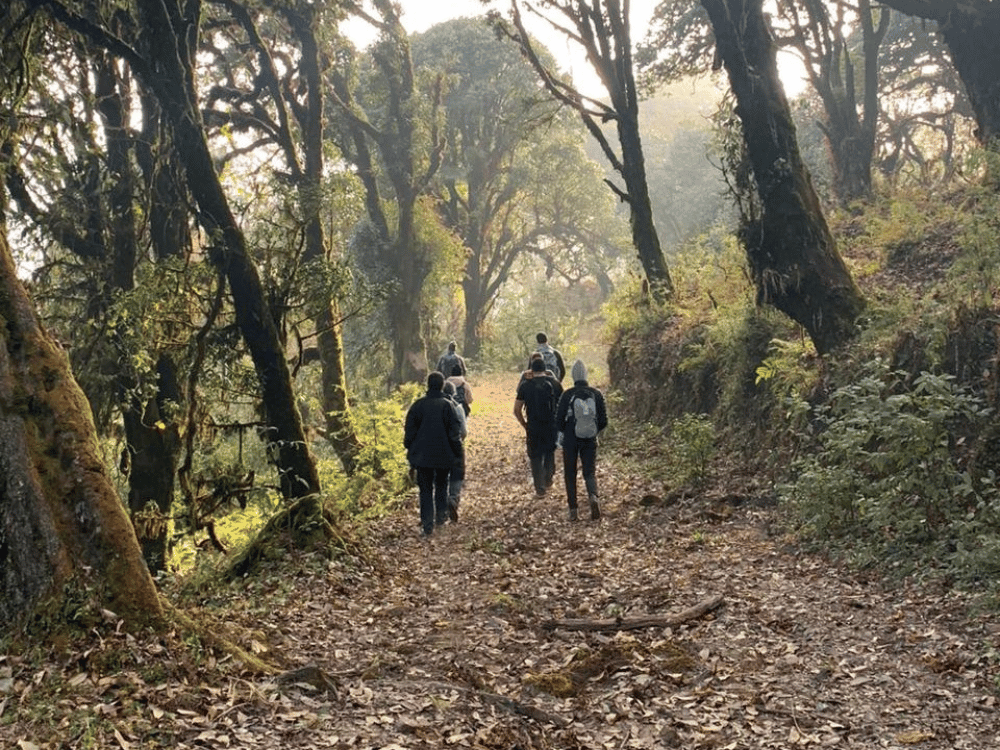 Participants of RPN ecotrip hiking in red panda habitat in Ilam district. Credit: RPN 2024
Participants of RPN ecotrip hiking in red panda habitat in Ilam district. Credit: RPN 2024
Planting hundreds of thousands of trees for red pandas
To reforest these critical habitat areas we work closely with local communities to grow, plant, and manage native trees across the degraded landscape. This work wouldn’t be possible without the knowledge and dedication of local heroes, like our Restoration Guardians who work directly on our restoration sites, and the support of Panda Guardians who give monthly.
Grow, protect, plant, and care
We understand that red panda conservation requires a holistic approach; we view our restoration work the same way. From growing seedlings in our nurseries to post-planting care, our team remains committed to the restoration and survival of red panda habitat throughout the lifetime of the forest.
In 2023, we purchased 65,921 seedlings from pre-existing restoration nurseries managed by local communities. Of all the purchased and ready seedlings in the restoration nursery, almost 41,000 seedlings of different native species were planted in the Jaubari Restoration Site that year!
Our growing potential continues to expand; we constructed three new conservation nurseries with a capacity of approximately 22,680 seedlings for sapling germination in Nepal’s Jaubari and Tumling in 2023.
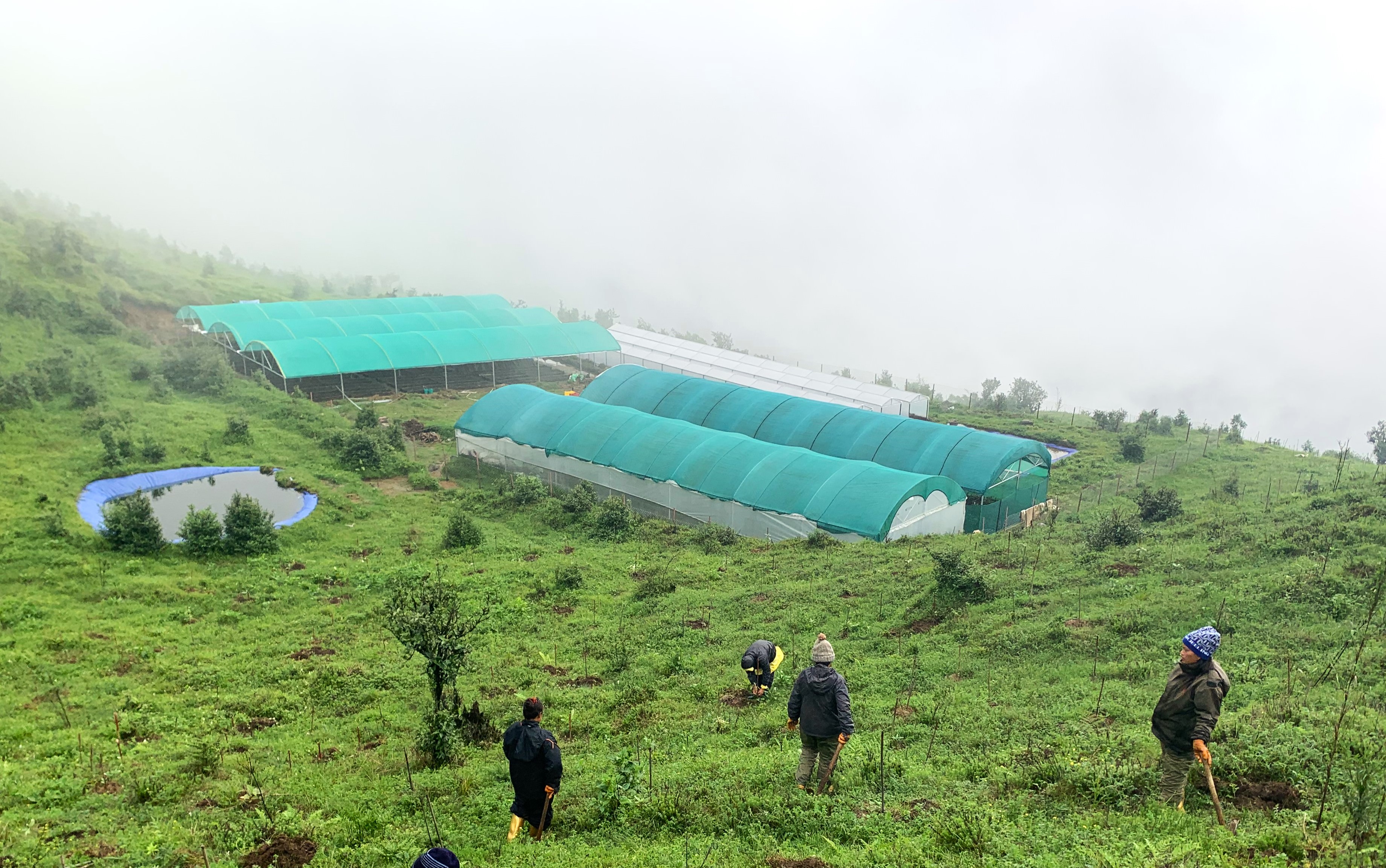
Forest nurseries at Jaubari restoration site. Credit: RPN 2024
Before we plant the seedlings into the earth, we install fences around the restoration site to protect the young seedlings from livestock. Using a strategic combination of mesh wire and bamboo-mesh fencing, these fences prevent livestock entry without affecting the movement of wildlife like red pandas.
Once the fences have been constructed, Restoration Guardians begin planting diverse native seedlings across the landscape. Since the initiation of Plant a Red Panda Home in 2019, we have planted over 650,000 trees in degraded areas. As of today, in June of 2024, we have already planted 10,342 seedlings in degraded areas of Ilam this year alone!
.jpg)
Restoration Guardians planting trees in Jaubari, Ilam. RPN 2022.
To increase the survival of the seedlings, we carry out post-planting care throughout the year. We conduct weeding, staking, and mulching of the planted seedlings, as well as regular monitoring of the trees’ growth and health.
A holistic approach to red panda conservation
We are proud of the successes of this habitat restoration project and are excited to see its continual impact on local communities of pandas, people, and plants alike. Not only have we seen improved tree cover in our restoration sites, but we have also seen improved presence of red pandas in these areas, as well!
Best of all, our restoration work employs local people in green jobs that help foster a sustainable future for the people who live among the pandas. Through eco-skill-building, employment with RPN, and better green spaces, we are seeing the lives of our communities changing for the better.
“Red Panda Network has been helping us restore our degraded forests for eight years now; the Jaubari community is very happy that they are here,” says Thupten Bhutia, a local community member. “Wildlife that hasn’t been seen here for years — like Himalayan black bear, red muntjac, leopard and even red panda — are now visiting the reforested habitat.”
These successes are only possible with supporters like you, who help us purchase degraded land, buy and grow seedlings, and employ local people. Your support makes a difference; become a Panda Guardian today to make a lasting impact on red panda habitat restoration in Nepal and beyond.
